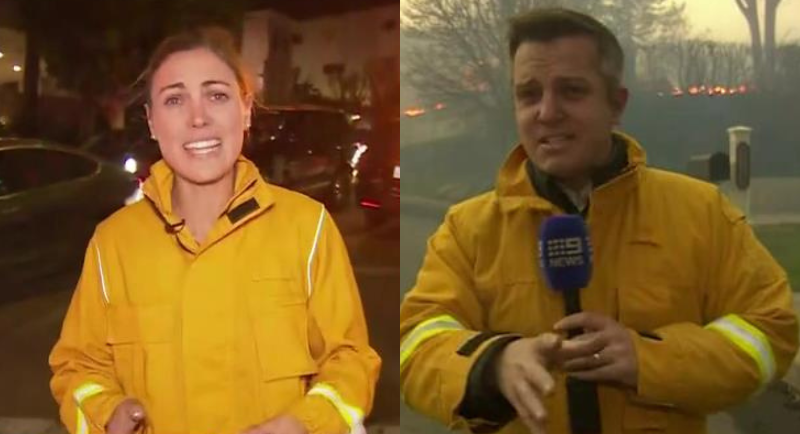The 9News US bureau has been at the forefront of providing coverage for Australia from the devastating LA wildfires to the upcoming inauguration.
Mediaweek spoke to correspondents Lauren Tomasi and Jonathan Kearsley about coping with the fatigue from the coverage, the key to successful teamwork and preparing for the inauguration.
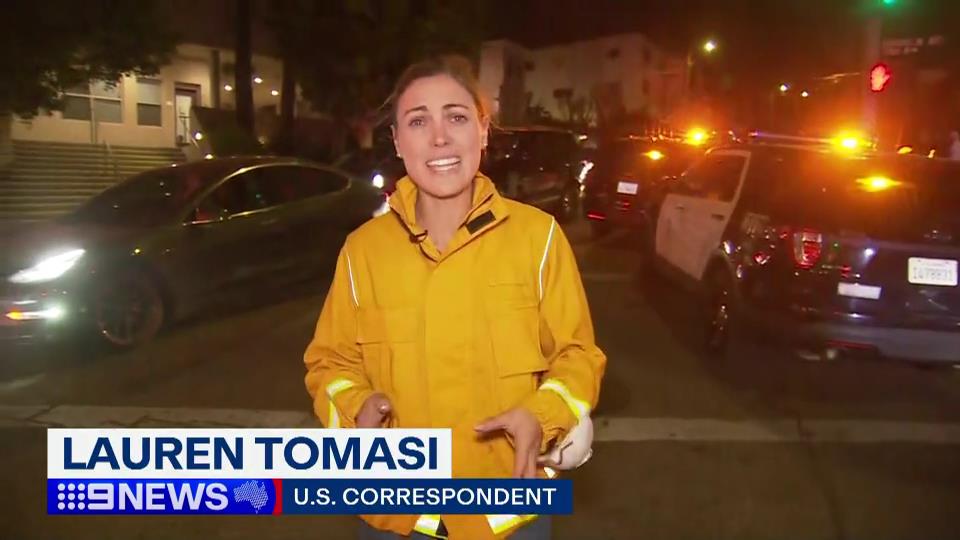
Laura Tomasi
‘The responsibility of sharing these stories is an important one’
Both Tomasi and Kearsley noted a deep feeling of appreciation and privilege for being able to cover the human impact of the narrative.
For Tomasi, it was a tough experience speaking to the survivors and picking up the pieces, particularly a meeting with an Altadena resident named Suzanne.
“(She) was brave enough to share her story with me: her partner had passed away from cancer a few years earlier, and now she had lost their house and all their memories.
“Suzanne told me she was grateful to be alive. People and communities have extraordinary resilience in the face of adversity – as journalists, we are lucky enough to bear witness to that, and the responsibility of sharing these stories is an important one.”
Kearsley said that as journalists, their job also involves highlighting emotional and powerful stories.
“Of course, it impacts you on a personal level. These are people’s lives. But at the height of it, we focus on the job at hand. At some point, for us, it all sinks in. We are not fighting fires or losing everything, but we are human.”
Kearsley said water, sleep and discussing the stories have been key mechanisms to coping with providing rolling coverage.
For Tomasi, leaning on her team during a tough time has been beneficial. “When you’re lucky enough to have a home to go back to, you take a moment to appreciate that and decompress,” she added.
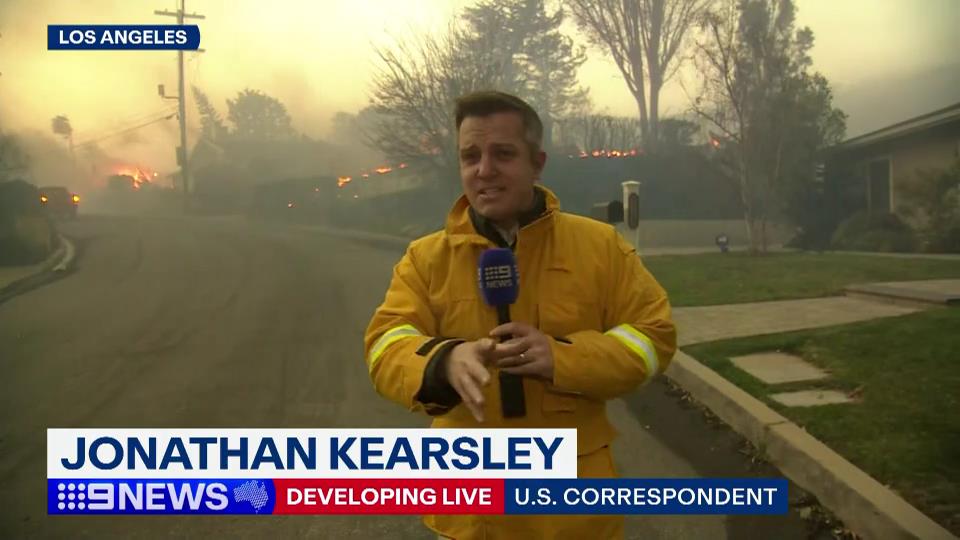
Jonathan Kearsley
Balancing news narrative with the human impact
Balancing the news narrative of the wildfires with the human impact and loss is a challenge. Kearsley said: “It’s about finding and reporting something new each day. Whether it’s a survival tale or an incredible show of community spirit. In a disaster zone like this, the people’s stories speak for themselves.
“The human narrative tells the story of a disaster of this magnitude, and in instances like this, you’re dealing with communication dropouts, but it’s connecting with people on a personal level that helps these stories to be told.
“In this instance, there are obviously issues around what happened with the firefight and specifically around what happened with water supply. That’s part of the narrative that we also explore and explain.”
As a journalist, Kearsley said the key is to balance information from the ground, providing up-to-date and accurate information while negotiating technological challenges from fires.
Communication was a technological issue that the reports had to work around while on the ground in Los Angeles with telephone towers and communication infrastructure.
Tomasi said: “Tech is an evolving beast. During these fires, our bureau chief Rich Moran rolled out a star link at one point to use in conjunction with our other tech to get reports to air.”
Kearsley said he has had to find people on the ground or contact sources before heading into the disaster zone. He added: “When we could get service, we would update colleagues and our team and compare what we have on the ground to what has come from elsewhere.”
Meanwhile, drones have been banned because of high winds and conditions, meaning footage has been filmed on the ground or sourced from people they’ve interviewed.
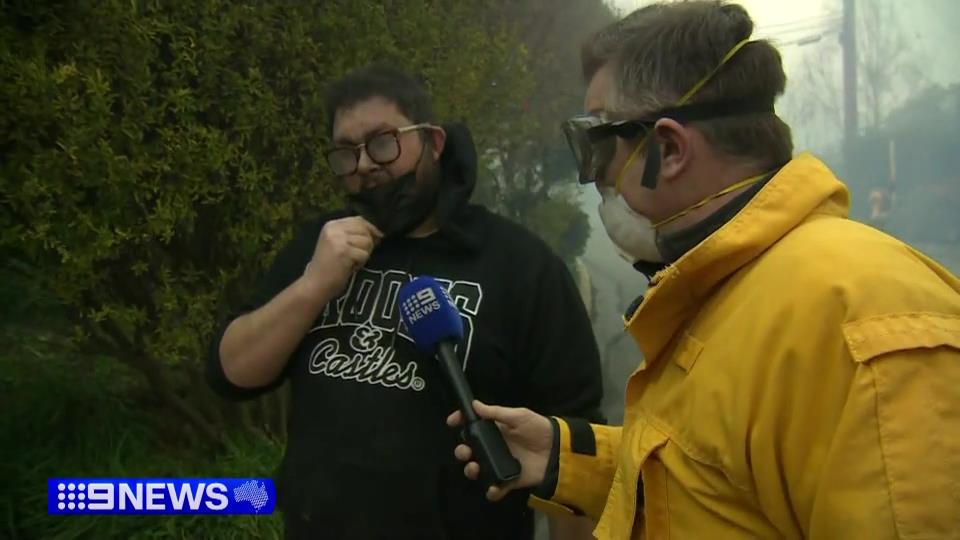
Teamwork
9News’ teamwork, communication, collaborative thinking, and storytelling have been the most important aspects of its LA Wildfire coverage, both with the LA-based US bureau and Australian editorial team.
“The coverage doesn’t happen without it. There’s a really good understanding across our foreign editors in Australia, Shellie Doyle and Amber Cunneen and us on the ground in LA starting with guidance and leadership of Rich Moran, one of the greatest television cameramen Australia has seen,” Kearsley said.
He also credited the US team, comprising Tomasi, Jimmy Phillips and Reid Butler, for having each other’s backs.
From an on-the-ground perspective, Tomasi added that a strong partnership between the reporter and camera operator is paramount. “We talk through where we are going, the tech challenges we have, and we make a plan to keep safe while bringing our viewers the most in-depth reports we can provide.”
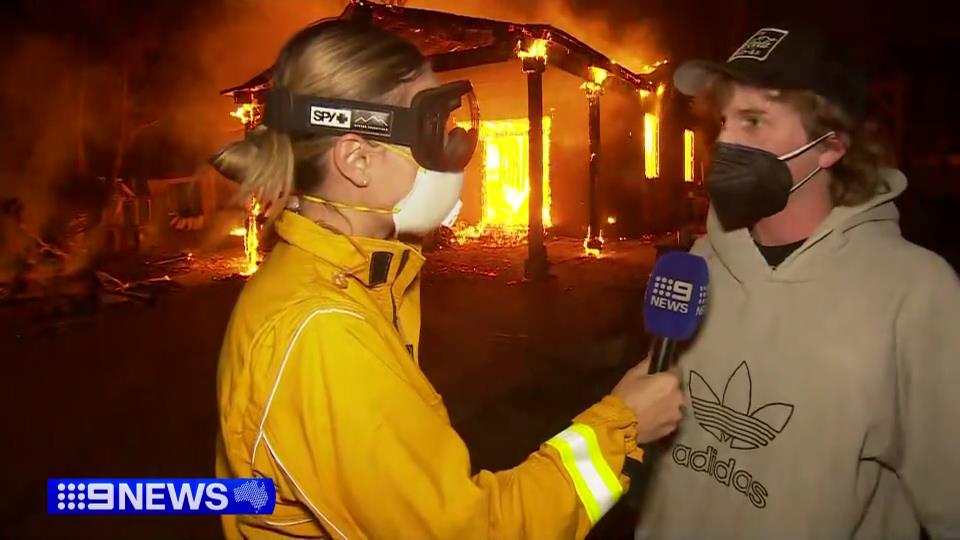
‘Australians know the devastating consequences of bushfires all too well’
Meanwhile back home, Australian audiences have resonated and empathised with the stories coming out of the wildfire coverage and its impact on people and communities.
“This is a devastating disaster that will last long beyond emergency crews leaving. The stories will continue to be there and will continue to be told,” Kearsley said.
Viewers have also connected with stories of Australians living in Los Angeles who have lost homes. Tomasi said: “LA is home to more than 40 thousand Aussies – and our audience has wanted updates and ways to support those Australians – and Angelinos – who are going through this disaster.”
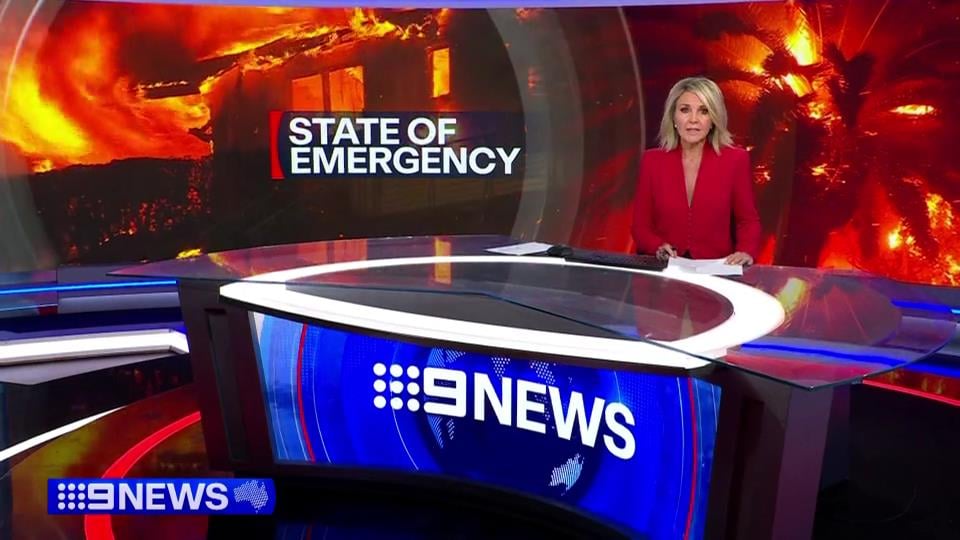
Georgie Gardener
From wildfires to the inauguration
As Kearsley and Tomasi prepare to change scenery to cover Donald Trump’s inauguration in Washington, the duo has been balancing downtime and research.
“I’ll spend some time with my family. My wife Gemma and our three kids William, Pippa and Ben are everything.”
Meanwhile, Tomasi shared she’ll be packing her thermals: “It feels like the temperature will be around -15 degrees in Washington DC.’
“Our US Bureau team has lived and breathed American politics and followed the President-Elect through what was an extraordinary 2024. Research, research, research – and on US Monday/ Aus Tuesday, we will bring you the very latest as President 45 is sworn in as President 47. “
–
Top image: Laura Tomasi and Jonathan Kearsley
